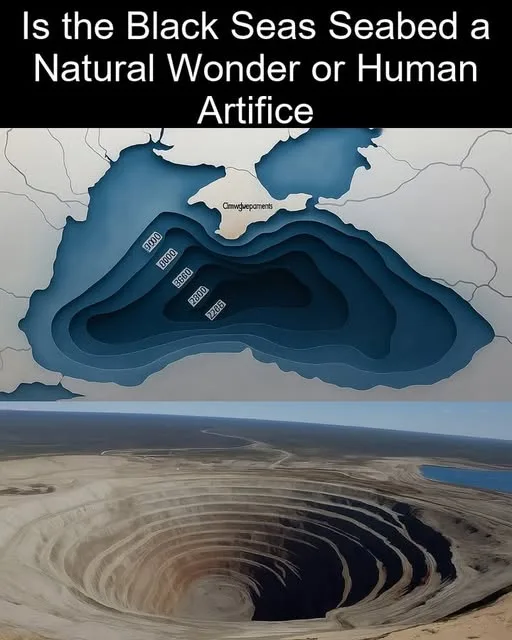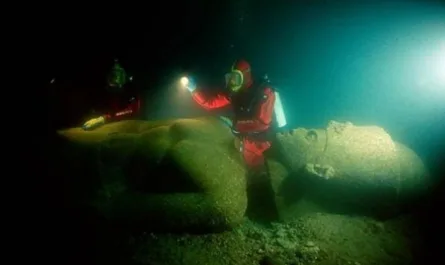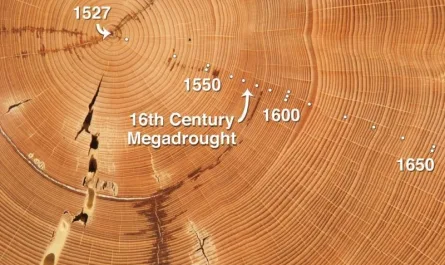The intriguing image you’ve shared juxtaposes an artistic rendering of a “drained” Black Sea—depicting its seabed as a series of terraced depths—with a real photograph of a massive open-pit quarry, likely the Mir Diamond Mine in Siberia or a similar site. This visual comparison raises provocative questions: Could the Black Sea’s underwater topography, with its apparent stepped structure, indicate ancient human engineering, or is it purely the result of natural geological forces? The hypothesis mentioned suggests tectonic plate movements sculpted this depression, but it also hints at possible human intervention. Based on geological evidence, the Black Sea’s seabed is unequivocally a natural formation, shaped over millions of years by tectonic activity, sedimentation, and sea-level fluctuations. Let’s break this down step by step, exploring the science, the visual parallels, and what this reveals about Earth’s history.

The Geological Formation of the Black Sea: A Natural Basin
The Black Sea is a marginal sea located between Europe and Asia, and its origins trace back to ancient tectonic processes. Geologists classify it as a back-arc basin, formed due to the northward subduction of the Neo-Tethys Ocean plate beneath the Eurasian plate. This subduction created extensional forces that rifted the crust, leading to the basin’s development. The process began around 200 million years ago during the Mesozoic era, with significant rifting in the Western Black Sea occurring in the Barremian and Aptian stages (about 130–113 million years ago), eventually forming oceanic crust approximately 20 million years later. The basin’s current form emerged at the end of the Paleocene Epoch, roughly 55 million years ago, amid structural upheavals in Anatolia.
Bathymetric maps reveal the Black Sea’s true underwater topography: a central abyssal plain reaching a maximum depth of about 2,212 meters, surrounded by continental shelves, steep slopes (particularly on the southern side), and gentler northern gradients with some internal steps. The seabed is asymmetric, with sediment thicknesses exceeding 15 kilometers in places, accumulated over eons through erosion from surrounding rivers like the Danube and Dnieper. During the last Ice Age (ending about 10,000 years ago), the Black Sea alternated between a dry seabed, a freshwater lake, and its current saline state, influenced by global sea-level changes. A notable event was the Black Sea deluge around 9,400–7,600 years ago, when rising Mediterranean waters breached the Bosphorus Strait, flooding the basin and transforming it from a freshwater lake into a sea. This catastrophic inflow, proposed by geologists William Ryan and Walter Pitman, may have inspired ancient flood myths like Noah’s Ark.
These processes—rifting, subduction, sedimentation, and flooding—are entirely natural, with no evidence of human involvement in shaping the seabed on such a massive scale.
Addressing the Quarry Comparison: Visual Similarity vs. Reality
The illustration in your image portrays the Black Sea’s depths (200m, 500m, 1,000m, 1,500m, 2,000m) as distinct, terraced layers, evoking the stepped excavation of a human-made quarry. Real quarries, like the one shown (possibly the Udachnaya pipe in Russia or Bingham Canyon in Utah), feature artificial benches created by controlled blasting and digging for mineral extraction. This visual parallel has fueled speculation, with some online sources claiming the Black Sea resembles a “giant quarry” drained and refilled.
However, actual bathymetric data tells a different story. High-resolution maps from sources like EMODnet and GEBCO show smooth contours rather than sharp, man-made steps. The “terraces” in the artistic rendering are simplified representations of depth contours, not literal ledges. Natural geological features, such as submarine canyons, alluvial fans, and fault lines, can create layered appearances through erosion and deposition, mimicking quarries without human intervention. The Black Sea’s anoxic (oxygen-free) deep waters preserve shipwrecks and artifacts remarkably well, but this is due to natural chemistry—high hydrogen sulfide levels inhibit decay—not artificial design.
Debunking Claims of Human Artifice
Some fringe theories suggest the Black Sea is an “ancient quarry” mined for minerals in prehistoric times, later flooded, with its shape attributed to “electrical discharge” or advanced civilizations. These ideas often appear in social media and YouTube videos touting “mysteries” of the Black Sea, including preserved ancient ships and unusual salinity layers. However, no credible archaeological or geological evidence supports human excavation on this scale—equivalent to moving billions of cubic meters of earth—especially given the basin’s age predates human civilization by tens of millions of years. Mainstream science attributes its formation to plate tectonics, and deep-sea surveys have uncovered natural features like mud volcanoes and petroleum deposits, not artificial structures.
The Black Sea’s “secrets,” such as well-preserved wrecks from Byzantine and Ottoman eras, stem from its unique stratified waters (fresh surface layer over saline depths), a natural phenomenon caused by limited mixing through the narrow Bosphorus.
What This Comparison Reveals About Earth’s Geological Narrative
The quarry-like illusion highlights how natural processes can produce engineered-looking landscapes, offering lessons in geomorphology—the study of landform origins. Tectonic basins like the Black Sea demonstrate plate movements’ power to reshape continents, while events like the deluge illustrate climate change’s impact on sea levels. This narrative connects to broader planetary history: similar basins exist worldwide (e.g., the Caspian Sea), formed by ancient oceans’ closure. It also underscores the importance of distinguishing science from speculation, as visual analogies can mislead without data.
In summary, the Black Sea’s seabed is a natural wonder, not human artifice. Its formation reveals Earth’s dynamic geology, from subduction to flooding, reminding us of our planet’s ancient, ever-changing story. If you’re drawn to such mysteries, exploring bathymetric maps or documentaries on the Black Sea deluge could provide even more fascinating insights!


